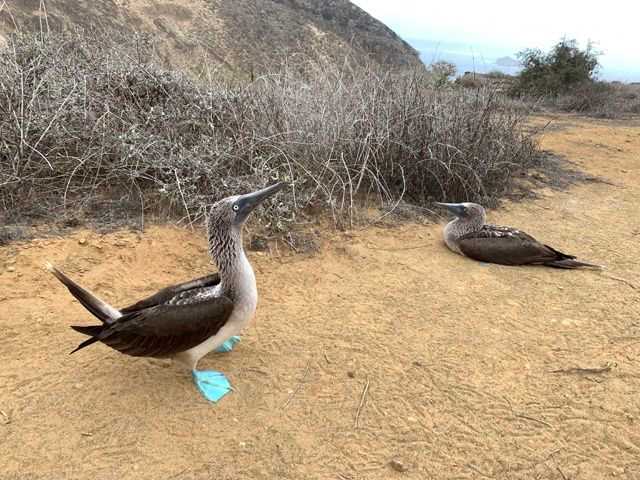The Galápagos archipelago is formed by 13 larger islands, and more than 60 smaller islets and rocks. The South Equatorial Current, an ensemble of various Peruvian coastal currents mixed with the Humboldt Current, reach the islands with its cold waters and serves as a gateway for organisms to arrive in a natural way. In this southeastern region of the Galápagos, species have had more time to adapt and evolve, which explains why there is such a higher rate of endemism among plants and animals.
- Daily Expedition Reports
- 05 Oct 2021
San Cristóbal Island, 10/5/2021, National Geographic Islander
- Aboard the National Geographic Islander
- Galápagos
Gaby Bohorquez, Naturalist
Gaby was born and raised in Guayaquil, Ecuador. Her first job in the Galapagos was on board a 90-passenger cruise ship as the cruise director’s assistant, and she fell under the spell of the Enchanted Isles. She returned to Guayaquil to study at the ...
Read MoreWalter Perez, Naturalist/Certified Photo Instructor
Walter was born in a very small town on the mainland of Ecuador. His first trip to the Galápagos was when he was 12 years old, visiting friends and aunt, who had moved to the islands. From the first moment he saw the Islands, he fell in love with the...
Read MoreShare Report
Related Reports
11/23/2022
Read
National Geographic Islander II
Isabela and Fernandina
Our day began with the chance to point out a lot of interesting geological features as we enjoyed Zodiac tours along a massive flank of Ecuador Volcano on Punta Vicente Roca. In the afternoon, we took a sunny walk on Punta Espinoza on Fernandina Island. We spotted many iguanas, and a bunch of sea lions hanging around, too.
11/22/2022
Read
National Geographic Islander II
North Seymour & Rabida Islands
Relatively small and low compared to neighboring Santa Cruz, North Seymour is located to the north of Baltra. The island is dry with predominantly low shrubs, like prickly pear cacti. The incense trees are bare during the dry season. Seabirds like frigatebirds and blue-footed boobies nest on the island, and sea lions rest on the sand when they are not fishing. Land and marine iguanas also live here. Rabida is in the middle of the archipelago and has a striking red sand beach. We observed a small colony of sea lions of all ages resting or nursing. Behind the beach, American flamingos nest in a brackish lagoon. This island is full of contrasts and wildlife that we enjoyed observing during this day of expedition.









